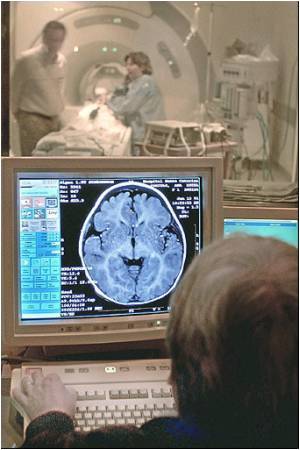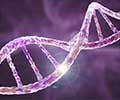Sometimes instead of crawling, evolution, it seems, jumps.

In a feat of "molecular time travel," the researchers resurrected and analyzed the functions of the ancestors of genes that play key roles in modern human reproduction, development, immunity and cancer. By re-creating the same DNA changes that occurred during those genes' ancient history, the team showed that two mutations set the stage for hormones like estrogen, testosterone and cortisol to take on their crucial present-day roles.
"Changes in just two letters of the genetic code in our deep evolutionary past caused a massive shift in the function of one protein and set in motion the evolution of our present-day hormonal and reproductive systems," said Joe Thornton, PhD, professor of human genetics and ecology & evolution at the University of Chicago, who led the study.
"If those two mutations had not happened, our bodies today would have to use different mechanisms to regulate pregnancy, libido, the response to stress, kidney function, inflammation, and the development of male and female characteristics at puberty," Thornton said.
The findings were published online June 24 in the Proceedings of the National Academy of Sciences.
Understanding how the genetic code of a protein determines its functions would allow biochemists to better design drugs and predict the effects of mutations on disease. Thornton said the discovery shows how evolutionary analysis of proteins' histories can advance this goal, Before the group's work, it was not previously known how the various steroid receptors in modern species distinguish estrogens from other hormones.
Advertisement
Thornton's group traced how the ancestor of the entire receptor family—which recognized only estrogens—evolved into descendant proteins capable of recognizing other steroid hormones, such as testosterone, progesterone and the stress hormone cortisol.
Advertisement
Thornton's team narrowed down the time range during which the capacity to recognize non-estrogen steroids evolved, to a period about 500 million years ago, before the dawn of vertebrate animals on Earth. They then identified the most important mutations that occurred during that interval by introducing them into the reconstructed ancestral proteins. By measuring how the mutations affected the receptor's structure and function, the team could re-create ancient molecular evolution in the laboratory.
They found that just two changes in the ancient receptor's gene sequence caused a 70,000-fold shift in preference away from estrogens toward other steroid hormones. The researchers also used biophysical techniques to identify the precise atomic-level mechanisms by which the mutations affected the protein's functions. Although only a few atoms in the protein were changed, this radically rewired the network of interactions between the receptor and the hormone, leading to a massive change in function.
"Our findings show that new molecular functions can evolve by sudden large leaps due to a few tiny changes in the genetic code," Thornton said. He pointed out that, along with the two key changes in the receptor, additional mutations, the precise effects of which are not yet known, were necessary for the full effects of hormone signaling on the body to evolve.
Source-Eurekalert











